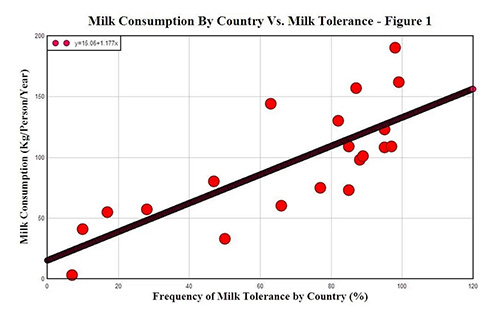By Robert Holloway
August 1, 2007
Some months ago, I became interested in the subject of milk tolerance and its genetic origin. It is known that most of the world’s population cannot easily consume milk because adults cannot digest the milk sugar lactose. However, some populations, such as those whose origins are in North Central Europe, can digest milk. The ability to digest milk apparently is due to a mutation that happened one or more times in North Central Europe several thousand years ago. It is believed that this mutation spread in the Funnel Beaker Culture approximately 8,000 years ago. Even now the ability to drink milk is most common in areas in or near the area occupied by the Funnel Beaker Culture. The Funnel Beaker Culture takes its name from the characteristic pottery made by those people. The pottery often has a flared rim in the upper few inches of the vessel, so that the opening of the vessel is widest along the top rim. It is believed that cattle and milk products were important to the Funnel Beaker Culture. It occurred to me that the shape of their characteristic pottery was probably designed to aid in catching milk during the milking process. Those who have milked cows by hand know that sudden shifting of the animal can sometimes be a problem that results in spilt milk. The characteristic funnel beaker would help to prevent that problem. I believe that this is the first time that anyone has suggested that reason for the design of the funnel shaped vessels.
Because milk tolerance in adults varies so greatly among the world’s population, I wondered how milk consumption might vary as a function of milk tolerance. By graphing milk consumption versus milk tolerance, a remarkable correlation is shown. As far as I know, this is the first time that anyone has constructed such a graph. The plot is shown below, and a more detailed discussion is given in the PDF below:
The world champion milk drinkers are the Irish who drink about 190 liters per person per year.
